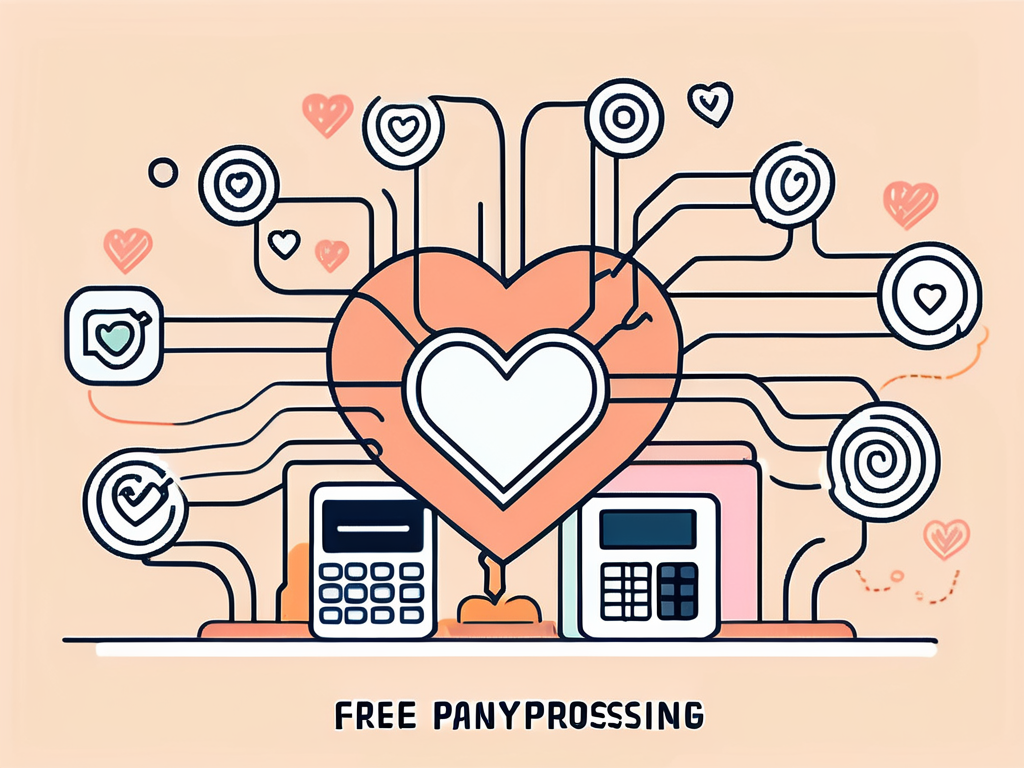Free Payment Processing for Nonprofits: A Comprehensive Guide

Managing finances effectively is crucial for nonprofits as they strive to fulfill their missions. Perhaps one of the most essential aspects of financial management is payment processing. This comprehensive guide delves into the intricacies of payment processing for nonprofits, outlining free options that help organizations save costs while enhancing their efficiency.
Understanding Payment Processing for Nonprofits
Payment processing entails the handling of transactions that allow organizations to collect donations, sell merchandise, or provide services. For nonprofits, this is critical not only for operational efficiency but also for maintaining donor trust and engagement.
Nonprofits rely heavily on donations to sustain their activities. Thus, understanding how payment processing works, and its potential pitfalls, is essential for any nonprofit aiming to maximize its financial potential.
The Importance of Payment Processing in Nonprofits
A robust payment processing system ensures that funds flow seamlessly from donors to the organization. This reliability can significantly impact the organization’s mission, as delays or complications with funds can hinder efforts to provide essential services.
Moreover, payment processing directly affects donor experience. If potential supporters encounter a complicated or insecure donation process, they may choose not to contribute. Therefore, selecting the right payment processor can enhance not only operational functionality but also donor retention and satisfaction.
In addition, an efficient payment processing system can provide valuable insights into donor behavior and trends. By analyzing transaction data, nonprofits can identify peak donation times, preferred payment methods, and even the demographics of their supporters. This information can help organizations tailor their fundraising strategies, allowing them to engage more effectively with their donor base and optimize their outreach efforts.
The Basics of Payment Processing
At its core, payment processing involves several key steps. These include authorization, settlement, and funding. Here’s how each step works:
- Authorization: This is when the payment processor verifies that the donor has sufficient funds and that the transaction is legitimate.
- Settlement: Once authorized, the payment processor collects the funds and prepares to transfer them to the nonprofit’s account.
- Funding: Finally, the funds are transferred from the donor’s bank to the nonprofit’s account, completing the transaction.
Each of these steps is crucial for ensuring that the payment process is smooth and secure. Nonprofits should also be aware of the fees associated with different payment processors, as these can vary significantly. Understanding the fee structure can help organizations choose a processing solution that aligns with their budget and financial goals. Additionally, many payment processors offer features such as recurring donation options, which can encourage ongoing support from donors and create a more predictable revenue stream for nonprofits.
Exploring Free Payment Processing Options
Nonprofits increasingly seek free payment processing options that enable them to channel more of their funds towards their missions rather than administrative costs. Thankfully, numerous options exist in the market to assist organizations in this regard. The ability to process donations efficiently and affordably can significantly impact a nonprofit’s ability to serve its community, making the choice of payment processor a critical decision.
Criteria for Choosing a Payment Processor
When looking for a payment processor, nonprofits should consider several criteria to ensure that they select a service that meets their needs effectively:
- Transaction Fees: Many platforms may offer free services but charge transaction fees. Understanding the fee structure is crucial.
- Integration Capabilities: The payment processor should easily integrate with existing systems like CRM tools or content management systems.
- Security Features: Donor trust is paramount. Look for processors that comply with PCI standards and offer robust encryption methods.
- User Experience: A straightforward donation process enhances donor satisfaction, increasing the likelihood of repeat giving.
Additionally, nonprofits should consider the level of customer support offered by the payment processor. Having access to responsive customer service can be invaluable, especially during peak fundraising seasons or when technical issues arise. Moreover, evaluating the processor’s reporting capabilities can help organizations track their fundraising efforts more effectively, allowing them to make data-driven decisions to enhance their strategies.
Overview of Free Payment Processing Solutions
Several free payment processing solutions cater specifically to nonprofit organizations. Here are a few notable options:
- PayPal for Nonprofits: Offers zero monthly fees and low transaction rates, making it a popular choice for donation collection.
- Square: While primarily aimed at small businesses, Square also provides donation features without monthly fees.
- Donorbox: A user-friendly platform that allows customizable donation forms without upfront fees.
Each of these solutions has its pros and cons, and nonprofits should assess which fits their operational needs best. For instance, PayPal’s extensive reach and brand recognition can help attract more donors, while Square’s point-of-sale capabilities can be beneficial for organizations that also host in-person fundraising events. Donorbox, on the other hand, stands out for its ability to create tailored donation forms that can be embedded on websites, enhancing the overall donor experience. By evaluating these options carefully, nonprofits can find a payment processing solution that not only meets their financial needs but also aligns with their mission and values.
The Benefits of Free Payment Processing for Nonprofits
Utilizing free payment processing can yield several significant advantages that extend beyond just saving money.
Cost-Saving Advantages
Nonprofits exist to serve, and every dollar saved in operational costs can go further toward helping the communities they serve. Free payment processing solutions reduce monthly expenses, allowing for reallocation of funds to crucial programs and outreach efforts.
Moreover, many free solutions charge only a small transaction fee, making them more affordable compared to traditional processing options that may impose high monthly fees along with transaction costs. This cost-effectiveness is particularly beneficial for smaller organizations that operate on tight budgets, as it allows them to maximize their impact without compromising on the quality of their services.
In addition to direct savings, nonprofits can also benefit from the potential for increased donor engagement. By minimizing the costs associated with payment processing, organizations can allocate more resources toward marketing and outreach, enhancing their visibility and attracting a broader base of supporters. This can lead to a virtuous cycle where increased donations further reduce operational costs, enabling nonprofits to amplify their mission.
Streamlining Donations and Transactions
With efficient payment processing systems in place, nonprofits can streamline their operations. A smooth donation process can significantly enhance donor experience, encouraging repeat donors and larger contributions.
Additionally, automation tools often offered by free payment processors can simplify tracking donations, generating tax receipts, and managing donor databases. This efficiency can free up staff time, allowing teams to focus on strategic initiatives rather than administrative tasks. By automating routine processes, nonprofits can ensure that their resources are being utilized effectively, ultimately leading to better service delivery and community impact.
Furthermore, many free payment processors come equipped with user-friendly interfaces and mobile optimization, making it easier for donors to contribute from their smartphones or tablets. This accessibility is crucial in today’s digital age, where convenience plays a significant role in donor behavior. By providing a seamless online donation experience, nonprofits can tap into a wider audience, including younger generations who prefer to engage with organizations through digital platforms. This not only increases the likelihood of one-time donations but also fosters long-term relationships with supporters who appreciate the ease of giving.
Implementing Free Payment Processing in Your Nonprofit
Moving towards a free payment processor requires careful planning and implementation to ensure long-term success.
Steps to Transition to a Free Payment Processor
- Evaluate Current Systems: Begin by assessing your existing payment processing systems to identify areas for improvement or cost reduction.
- Research Options: Consider the previously mentioned criteria and explore various payment processors to find an ideal match.
- Migrate Data: Prepare to transition donor data, ensuring that all information is securely backed up and transferred to the new system.
- Train Staff: Provide training to staff on the new system, ensuring they understand how it operates and how to troubleshoot common issues.
Tips for Successful Implementation
To ensure a successful transition to a free payment processor, consider the following tips:
- Communicate the Change: Inform your donors and stakeholders about the switch and any changes they may experience.
- Monitor Performance: Regularly evaluate the effectiveness of the new system, including transaction success rates and donor feedback.
- Stay Flexible: Be open to adjusting processes based on analytics and donor behaviors, optimizing the experience as needed.
Maintaining and Optimizing Your Payment Processing System
Once the new payment processing system is in place, it’s crucial to continually assess and refine it to maximize its benefits.
Regular System Checks and Updates
Periodically auditing your payment processing system helps ensure it is functioning efficiently. This includes checking for software updates, verifying payment security measures, and assessing transaction fees.
Keep an eye on emerging trends in payment processing technology and regulations, as upgrading systems to comply with new industry standards can enhance security and efficiency.
Maximizing the Benefits of Your Payment Processor
Continually explore features offered by your chosen payment processor that you may not currently utilize. Many systems offer powerful tools for donor engagement, analytics, and reporting which can further enhance fundraising efforts.
Engage in feedback loops with both staff and donors to identify areas for improvement. Utilizing analytics from payment processing can guide marketing strategies and donor outreach to enhance engagement and conversion rates.
In conclusion, free payment processing solutions present an opportunity for nonprofits to optimize their financial management strategies. By understanding the payment processing landscape, choosing the right solutions, and staying committed to ongoing evaluation and improvement, nonprofits can enhance their operational efficiency while maximizing the impact of their mission.
As you explore the benefits of free payment processing for your nonprofit, remember that a strong digital presence is equally crucial for maximizing your impact. BlueWing is dedicated to helping organizations like yours harness the power of paid social media and search to grow sustainably. With our expertise in the Google Ad Grants program and a commitment to keeping you informed every step of the way, we’re here to help you build a robust digital presence that drives your mission forward. Contact us today to learn how we can amplify your nonprofit’s reach and effectiveness.





